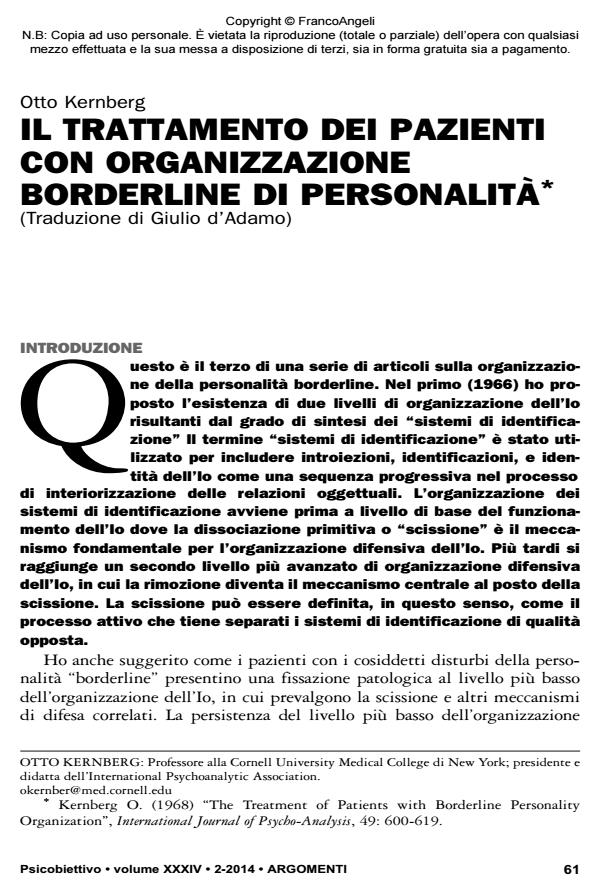Il trattamento dei pazienti con organizzazione borderline di personalità
Titolo Rivista PSICOBIETTIVO
Autori/Curatori Otto Kernberg
Anno di pubblicazione 2014 Fascicolo 2014/2
Lingua Italiano Numero pagine 30 P. 61-90 Dimensione file 589 KB
DOI 10.3280/PSOB2014-002005
Il DOI è il codice a barre della proprietà intellettuale: per saperne di più
clicca qui
Qui sotto puoi vedere in anteprima la prima pagina di questo articolo.
Se questo articolo ti interessa, lo puoi acquistare (e scaricare in formato pdf) seguendo le facili indicazioni per acquistare il download credit. Acquista Download Credits per scaricare questo Articolo in formato PDF

FrancoAngeli è membro della Publishers International Linking Association, Inc (PILA)associazione indipendente e non profit per facilitare (attraverso i servizi tecnologici implementati da CrossRef.org) l’accesso degli studiosi ai contenuti digitali nelle pubblicazioni professionali e scientifiche
Nel presente lavoro vengono presentate le difficoltà del trattamento di pazienti con organizzazione borderline di personalità (caratteristiche del transfert e del controtransfert, regressione e psicosi di transfert), e ne vengono illustrate alcune proposizioni generali sulla strategia psicoterapeutica. In particolare, vengono evidenziati come la scissione e gli altri meccanismi correlati (idealizzazione primitiva, identificazione proiettiva, negazione, onnipotenza), tutti tipici dei pazienti borderline, appaiono da un punto di vista clinico, e vengono suggeriti approcci psicoterapeutici complessivi.
Parole chiave:Organizzazione borderline di personalità; transfert; controtransfert; psicoterapia
Otto Kernberg, Il trattamento dei pazienti con organizzazione borderline di personalità in "PSICOBIETTIVO" 2/2014, pp 61-90, DOI: 10.3280/PSOB2014-002005